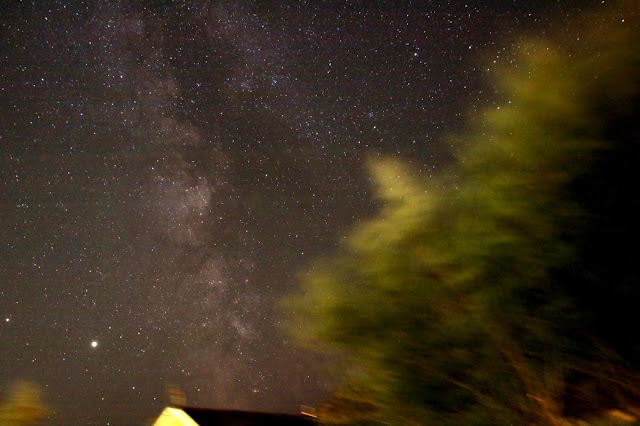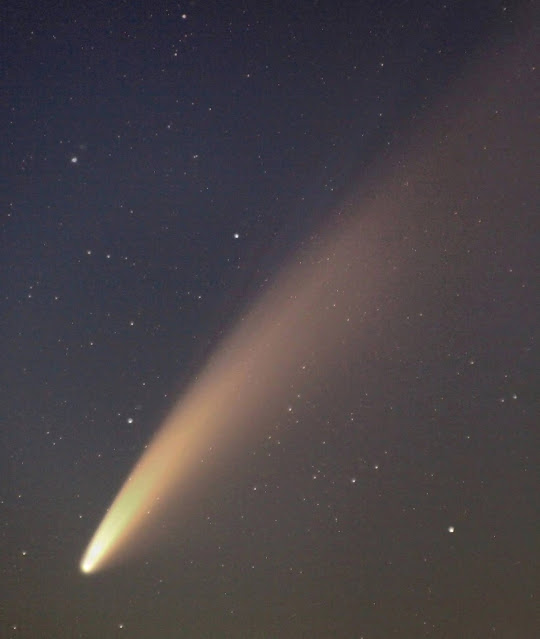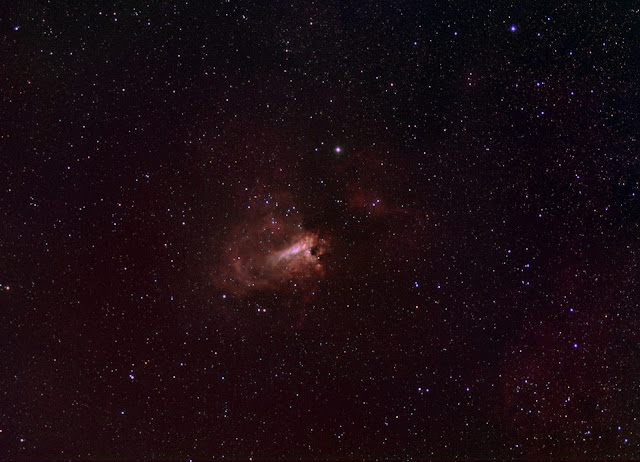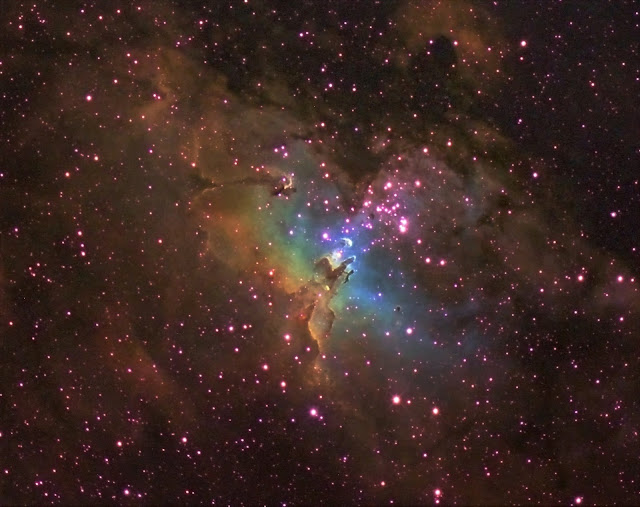Lying in the constellation of Cassiopeia the Queen are NGC 7538, a diffuse nebula, NGC 7635, the Bubble nebula and M52 a bright open cluster.
I took this image using an 80mm refractor at f/6.3, a Vixen Atlux mount, PHD autoguiding and an Atik 383L monochrome CCD camera. I was also using a set of Astronomik narrowband filters, SII, OIII and H-alpha.
Click on an image to get a closer view
Bi-colour image
On the first evening I set the camera on x2 bin mode, capturing 2.5 minute sub-frames. The total exposure time for each filter was 30 minutes. On the second evening, I set the camera to x1 bin mode for the luminance data using a H-alpha filter; capturing 5 minute sub-frames, and matching dar-frames. Flat fields were used to reduce the effects of vignetting in the final image. The total exposure time in H-alpha was 120 minutes.
Hubble Palette
This image of the Bubble nebula contains data from two telescopes, an 80 mm refractor and a 10 inch reflector.
This image is a reprocessed old image captured in 2016, revealing a large amount of core detail


















































